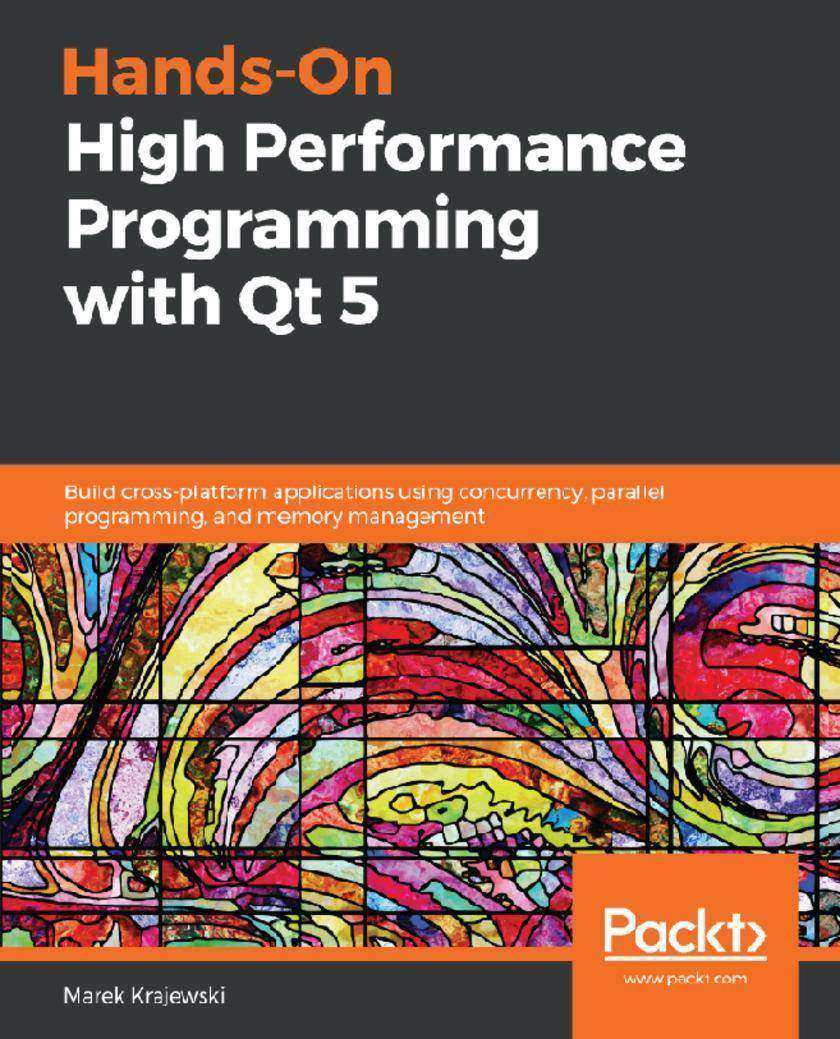
Hands-On High Performance Programming with Qt 5
¥81.74
Build efficient and fast Qt applications, target performance problems, and discover solutions to refine your code Key Features * Build efficient and concurrent applications in Qt to create cross-platform applications * Identify performance bottlenecks and apply the correct algorithm to improve application performance * Delve into parallel programming and memory management to optimize your code Book Description Achieving efficient code through performance tuning is one of the key challenges faced by many programmers. This book looks at Qt programming from a performance perspective. You'll explore the performance problems encountered when using the Qt framework and means and ways to resolve them and optimize performance. The book highlights performance improvements and new features released in Qt 5.9, Qt 5.11, and 5.12 (LTE). You'll master general computer performance best practices and tools, which can help you identify the reasons behind low performance, and the most common performance pitfalls experienced when using the Qt framework. In the following chapters, you’ll explore multithreading and asynchronous programming with C++ and Qt and learn the importance and efficient use of data structures. You'll also get the opportunity to work through techniques such as memory management and design guidelines, which are essential to improve application performance. Comprehensive sections that cover all these concepts will prepare you for gaining hands-on experience of some of Qt's most exciting application fields - the mobile and embedded development domains. By the end of this book, you'll be ready to build Qt applications that are more efficient, concurrent, and performance-oriented in nature What you will learn * Understand classic performance best practices * Get to grips with modern hardware architecture and its performance impact * Implement tools and procedures used in performance optimization * Grasp Qt-specific work techniques for graphical user interface (GUI) and platform programming * Make Transmission Control Protocol (TCP) and Hypertext Transfer Protocol (HTTP) performant and use the relevant Qt classes * Discover the improvements Qt 5.9 (and the upcoming versions) holds in store * Explore Qt's graphic engine architecture, strengths, and weaknesses Who this book is for This book is designed for Qt developers who wish to build highly performance applications for desktop and embedded devices. Programming Experience with C++ is required.
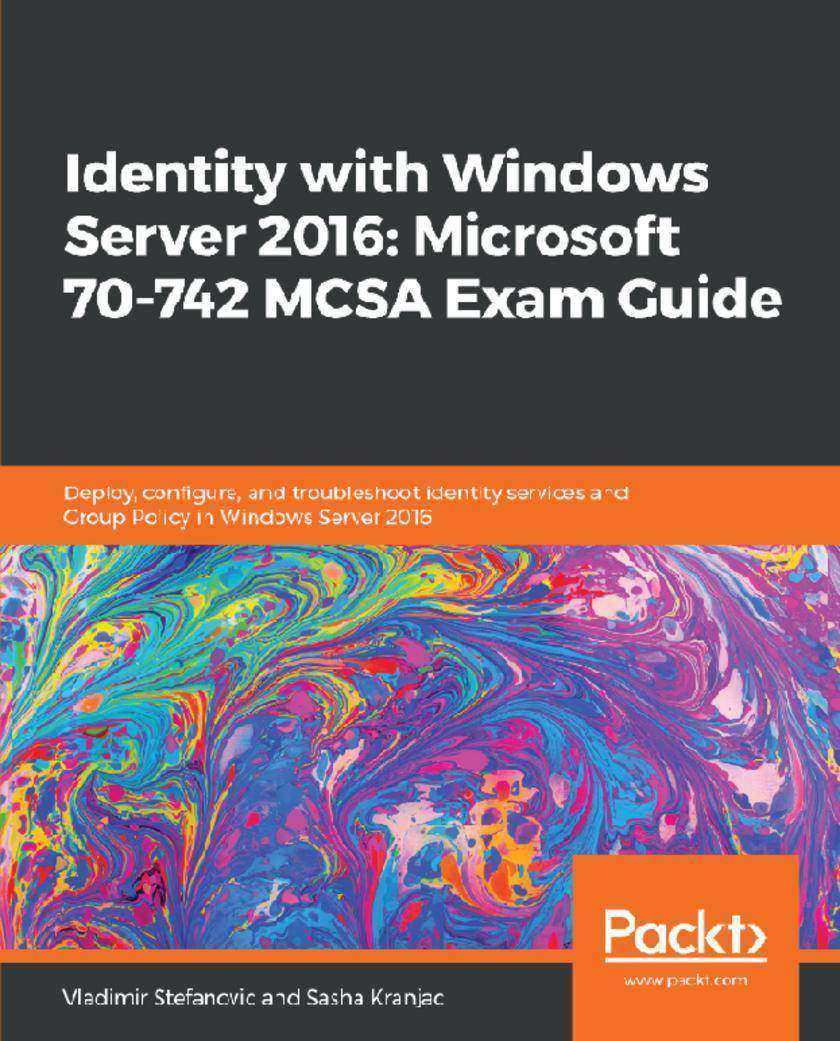
Identity with Windows Server 2016: Microsoft 70-742 MCSA Exam Guide
¥73.02
Equip yourself with the most complete and comprehensive preparation experience for Identity with Windows Server 2016: Microsoft 70-742 exam. Key Features * Helps you demonstrate real-world mastery of Windows Server 2016 identity features and functionality and prepare for 70-742 * Acquire skills to reduce IT costs and deliver more business value * Enhance your existing skills through practice questions and mock tests Book Description MCSA: Windows Server 2016 certification is one of the most sought-after certifications for IT professionals, which includes working with Windows Server and performing administrative tasks around it. This book is aimed at the 70-742 certification and is part of Packt's three-book series on MCSA Windows Server 2016 certification, which covers Exam 70-740, Exam 70-741, and Exam 70-742. This exam guide covers the exam objectives for the 70-742 Identity with Windows Server 2016 exam. It starts with installing and configuring Active Directory Domain Services (AD DS), managing and maintaining AD DS objects and advanced configurations, configuring Group Policy, Active Directory Certificate Services, and Active Directory Federation Services and Rights Management. At the end of each chapter, convenient test questions will help you in preparing for the certification in a practical manner. By the end of this book, you will be able to develop the knowledge and skills needed to complete MCSA Exam 70-742: Identity with Windows Server 2016 with confidence. What you will learn * Install, configure, and maintain Active Directory Domain Services (AD DS) * Manage Active Directory Domain Services objects * Configure and manage Active Directory Certificate Services * Configure and manage Group Policy * Design, implement, and configure Active Directory Federation Services * Implement and configure Active Directory Rights Management Services Who this book is for This book primarily targets system administrators who are looking to gain knowledge about identity and access technologies with Windows Server 2016 and aiming to pass the 70-742 certification. This will also help infrastructure administrators who are looking to gain advanced knowledge and understanding of identity and access technologies with Windows Server 2016. Familiarity with the concepts such as Active Directory, DNS is assumed.
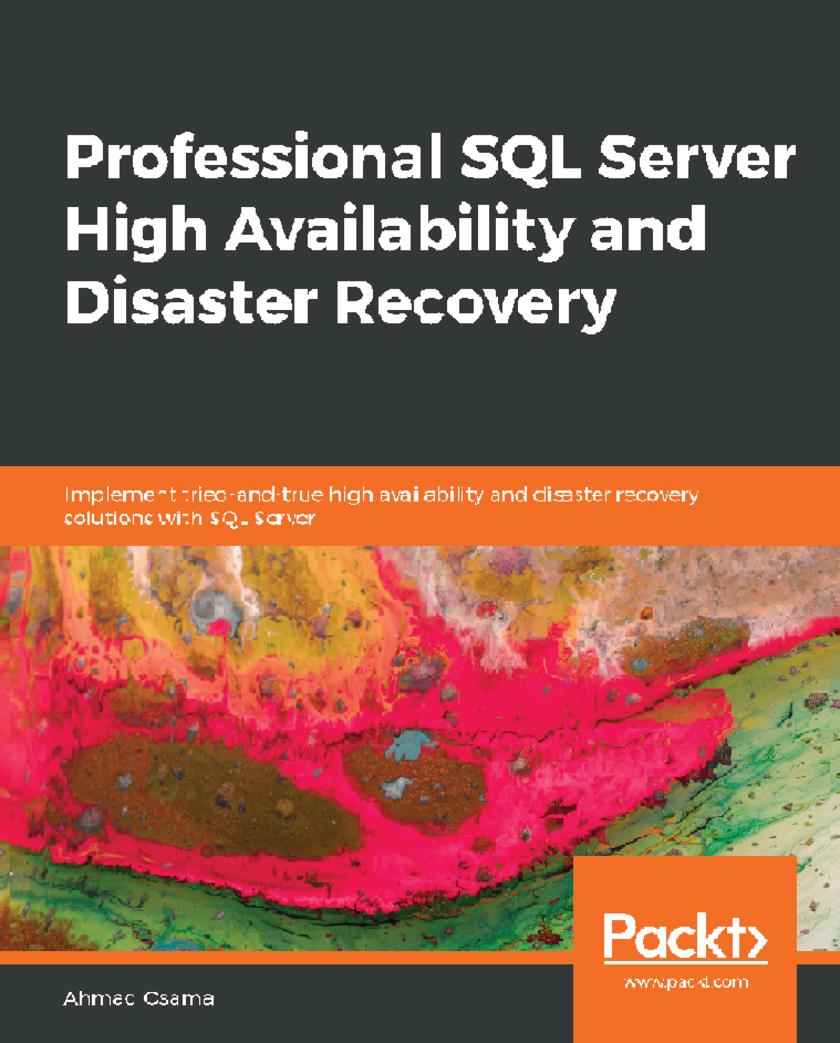
Professional SQL Server High Availability and Disaster Recovery
¥73.02
Leverage powerful features of the SQL Server and watch your infrastructure transform into a high-performing, reliable network of systems. Key Features * Explore more than 20 real-world use cases to understand SQL Server features * Get to grips with the SQL Server Always On technology * Learn how to choose HA and DR topologies for your system Book Description Professional SQL Server High Availability and Disaster Recovery explains the high availability and disaster recovery technologies available in SQL Server: Replication, AlwaysOn, and Log Shipping. You’ll learn what they are, how to monitor them, and how to troubleshoot any related problems. You will be introduced to the availability groups of AlwaysOn and learn how to configure them to extend your database mirroring. Through this book, you will be able to explore the technical implementations of high availability and disaster recovery technologies that you can use when you create a highly available infrastructure, including hybrid topologies. By the end of the book, you’ll be equipped with all that you need to know to develop robust and high performance infrastructure. What you will learn * Configure and troubleshoot Replication, AlwaysOn, and Log Shipping * Study the best practices to implement HA and DR solutions * Design HA and DR topologies for the SQL Server and study how to choose a topology for your environment * Use T-SQL to configure replication, AlwaysOn, and log shipping * Migrate from On-Premise SQL Server to Azure SQL Database * Manage and maintain AlwaysOn availability groups for extended database mirroring Who this book is for Professional SQL Server High Availability and Disaster Recovery is for you if you are a database administrator or database developer who wants to improve the performance of your production environment. Prior experience of working with SQL Server will help you get the most out of this book.
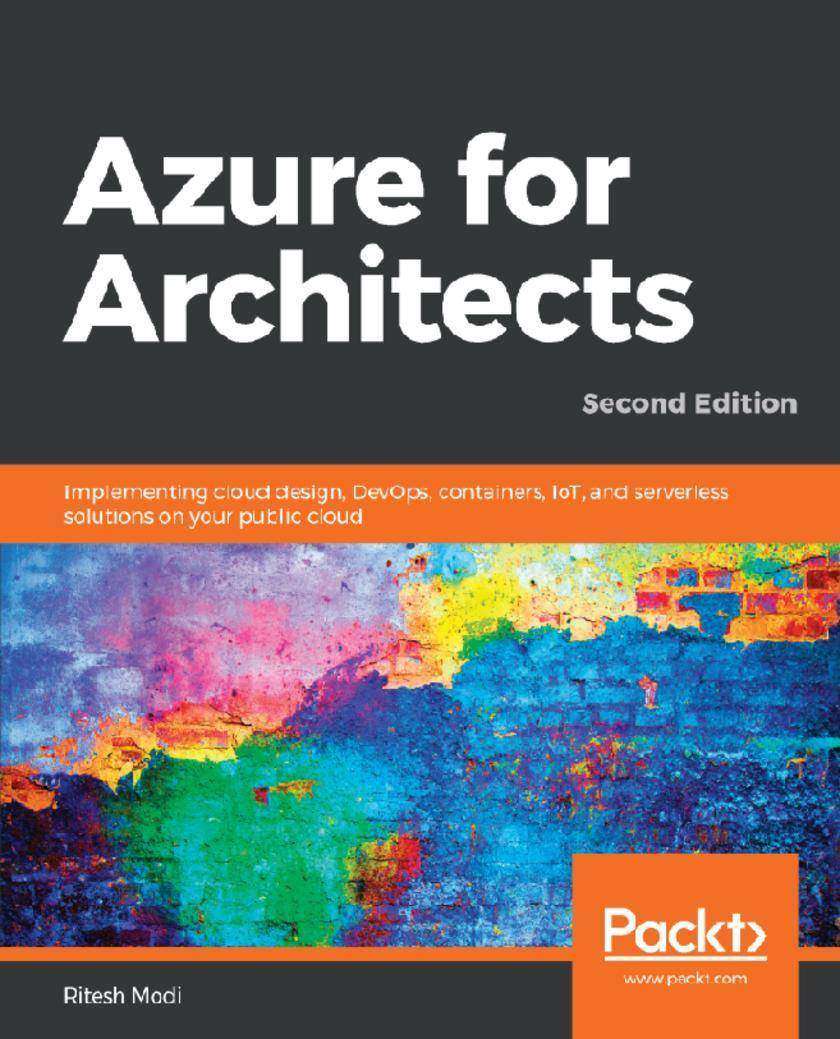
Azure for Architects
¥81.74
Create advanced data and integrated solutions using Azure Event Grid, functions, and containers Key Features * Get familiar with the different design patterns available in Microsoft Azure * Develop Azure cloud architecture and a pipeline management system * Get to know the security best practices for your Azure deployment Book Description Over the years, Azure cloud services have grown quickly, and the number of organizations adopting Azure for their cloud services is also gradually increasing. Leading industry giants are finding that Azure fulfills their extensive cloud requirements. Azure for Architects – Second Edition starts with an extensive introduction to major designing and architectural aspects available with Azure. These design patterns focus on different aspects of the cloud, such as high availability, security, and scalability. Gradually, we move on to other aspects, such as ARM template modular design and deployments. This is the age of microservices and serverless is the preferred implementation mechanism for them. This book covers the entire serverless stack available in Azure including Azure Event Grid, Azure Functions, and Azure Logic Apps. New and advance features like durable functions are discussed at length. A complete integration solution using these serverless technologies is also part of the book. A complete chapter discusses all possible options related to containers in Azure including Azure Kubernetes services, Azure Container Instances and Registry, and Web App for Containers. Data management and integration is an integral part of this book that discusses options for implementing OLTP solutions using Azure SQL, Big Data solutions using Azure Data factory and Data Lake Storage, eventing solutions using stream analytics, and Event Hubs. This book will provide insights into Azure governance features such as tagging, RBAC, cost management, and policies. By the end of this book, you will be able to develop a full-?edged Azure cloud solution that is Enterprise class and future-ready. What you will learn * Create an end-to-end integration solution using Azure Serverless Stack * Learn Big Data solutions and OLTP–based applications on Azure * Understand DevOps implementations using Azure DevOps * Architect solutions comprised of multiple resources in Azure * Develop modular ARM templates * Develop Governance on Azure using locks, RBAC, policies, tags and cost * Learn ways to build data solutions on Azure * Understand the various options related to containers including Azure Kubernetes Services Who this book is for If you are Cloud Architects, DevOps Engineers, or developers who want to learn key architectural aspects of the Azure Cloud platform, then this book is for you. Prior basic knowledge of the Azure Cloud platform is good to have.
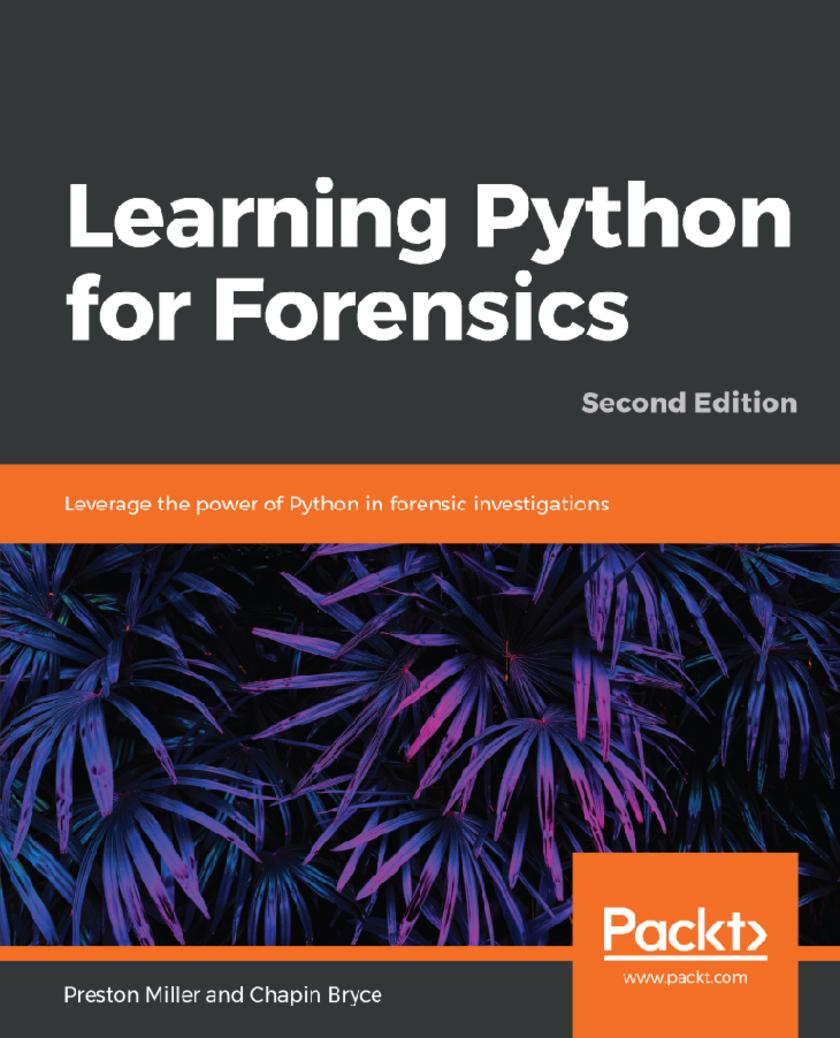
Learning Python for Forensics
¥81.74
Design, develop, and deploy innovative forensic solutions using Python Key Features * Discover how to develop Python scripts for effective digital forensic analysis * Master the skills of parsing complex data structures with Python libraries * Solve forensic challenges through the development of practical Python scripts Book Description Digital forensics plays an integral role in solving complex cybercrimes and helping organizations make sense of cybersecurity incidents. This second edition of Learning Python for Forensics illustrates how Python can be used to support these digital investigations and permits the examiner to automate the parsing of forensic artifacts to spend more time examining actionable data. The second edition of Learning Python for Forensics will illustrate how to develop Python scripts using an iterative design. Further, it demonstrates how to leverage the various built-in and community-sourced forensics scripts and libraries available for Python today. This book will help strengthen your analysis skills and efficiency as you creatively solve real-world problems through instruction-based tutorials. By the end of this book, you will build a collection of Python scripts capable of investigating an array of forensic artifacts and master the skills of extracting metadata and parsing complex data structures into actionable reports. Most importantly, you will have developed a foundation upon which to build as you continue to learn Python and enhance your efficacy as an investigator. What you will learn * Learn how to develop Python scripts to solve complex forensic problems * Build scripts using an iterative design * Design code to accommodate present and future hurdles * Leverage built-in and community-sourced libraries * Understand the best practices in forensic programming * Learn how to transform raw data into customized reports and visualizations * Create forensic frameworks to automate analysis of multiple forensic artifacts * Conduct effective and efficient investigations through programmatic processing Who this book is for If you are a forensics student, hobbyist, or professional seeking to increase your understanding in forensics through the use of a programming language, then Learning Python for Forensics is for you. You are not required to have previous experience in programming to learn and master the content within this book. This material, created by forensic professionals, was written with a unique perspective and understanding for examiners who wish to learn programming.
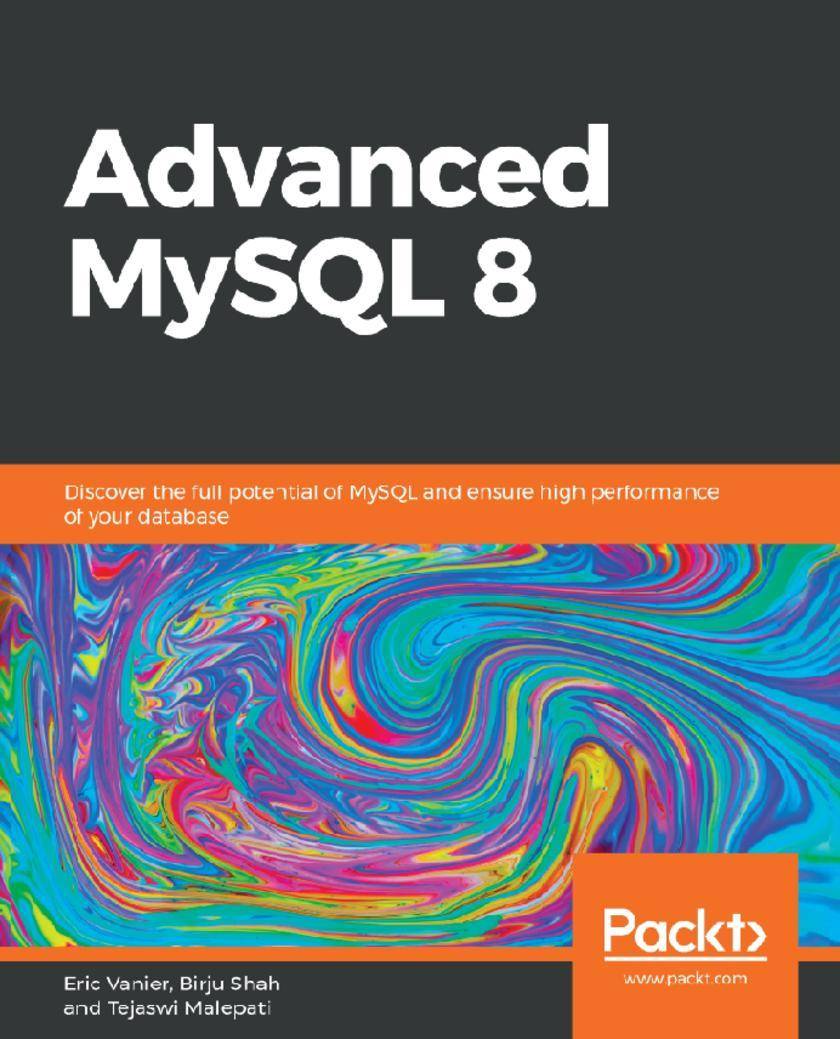
Advanced MySQL 8
¥73.02
Design cost-efficient database solutions, scale enterprise operations and reduce overhead business costs with MySQL Key Features * Explore the new and advanced features of MySQL 8.0 * Use advanced techniques to optimize MySQL performance * Create MySQL-based applications for your enterprise with the help of practical examples Book Description Advanced MySQL 8 teaches you to enhance your existing database infrastructure and build various tools to improve your enterprise applications and overall website performance. The book starts with the new and exciting MySQL 8.0 features and how to utilize them for maximum efficiency. As you make your way through the chapters, you will learn to optimize MySQL performance using indexes and advanced data query techniques for large queries. You will also discover MySQL Server 8.0 settings and work with the MySQL data dictionary to boost the performance of your database. In the concluding chapters, you will cover MySQL 8.0 Group Replication, which will enable you to create elastic, highly available, and fault-tolerant replication topologies. You will also explore backup and recovery techniques for your databases and understand important tips and tricks to help your critical data reach its full potential. By the end of this book, you’ll have learned about new MySQL 8.0 security features that allow a database administrator (DBA) to simplify user management and increase the security of their multi-user environments. What you will learn * Explore new and exciting features of MySQL 8.0 * Analyze and optimize large MySQL queries * Understand MySQL Server 8.0 settings * Master the deployment of Group Replication and use it in an InnoDB cluster * Monitor large distributed databases * Discover different types of backups and recovery methods for your databases * Explore tips to help your critical data reach its full potential Who this book is for Advanced MySQL 8 is for database administrators, data architects, and database developers who want to dive deeper into building advanced database applications in the MySQL environment.
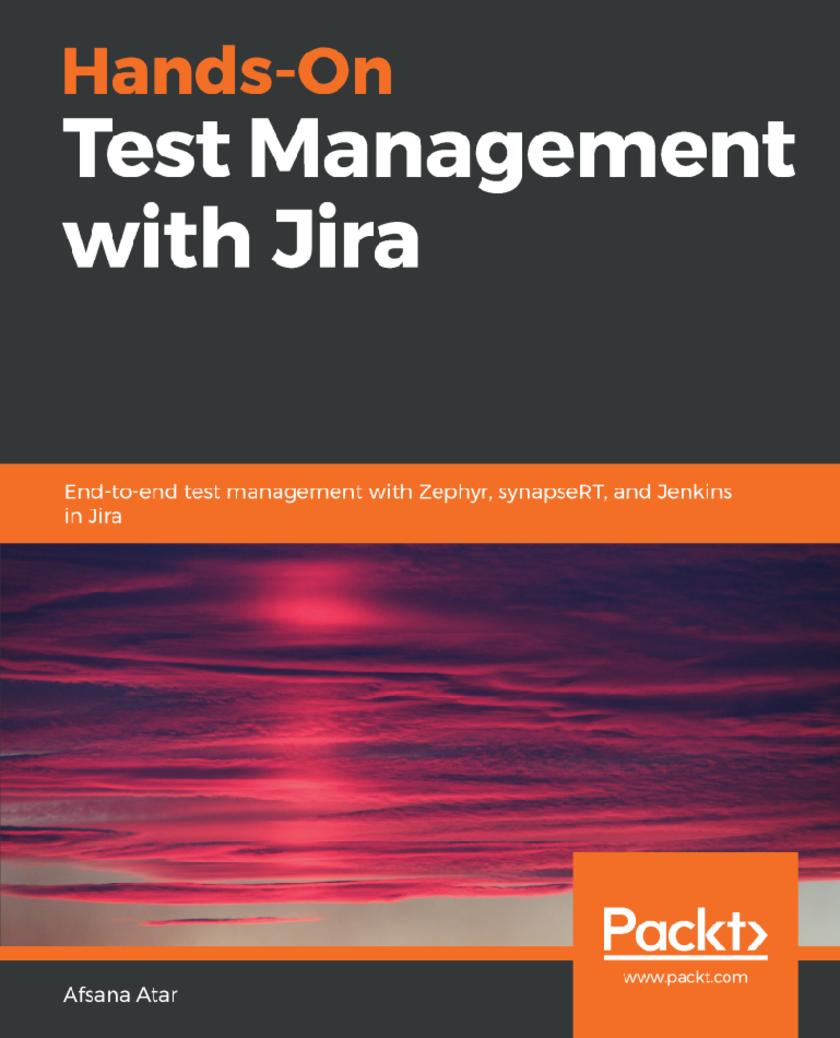
Hands-On Test Management with Jira
¥54.49
Learn best practices for testing with Jira and model industry workflows that can be used during the software development lifecycle Key Features * Integrate Jira with test management tools such as Zephyr, Test Management, and SynapseRT * Understand test case management, traceability, and test execution with reports * Implement continuous integration using Jira, Jenkins, and automated testing tools Book Description Hands-On Test Management with Jira begins by introducing you to the basic concepts of Jira and takes you through real-world software testing processes followed by various organizations. As you progress through the chapters, the book explores and compares the three most popular Jira plugins—Zephyr, Test Management, and synapseRT. With this book, you’ll gain a practical understanding of test management processes using Jira. You’ll learn how to create and manage projects, create Jira tickets to manage customer requirements, and track Jira tickets. You’ll also understand how to develop test plans, test cases, and test suites, and create defects and requirement traceability matrices, as well as generating reports in Jira. Toward the end, you’ll understand how Jira can help the SQA teams to use the DevOps pipeline for automating execution and managing test cases. You’ll get to grips with configuring Jira with Jenkins to execute automated test cases in Selenium. By the end of this book, you’ll have gained a clear understanding of how to model and implement test management processes using Jira. What you will learn * Understand QMS to effectively implement quality systems in your organization * Explore a business-driven structured approach to Test Management using TMap NEXT * Implement different aspects of test planning, test strategy, and test execution * Organize and manage Agile projects in Scrum and Kanban * Uncover Jira plugins available in the Atlassian Marketplace for testing and project management * Configure a DevOps pipeline for continuous integration using Jira with Jenkins Who this book is for If you’re a quality assurance professional, software project manager, or test manager interested in learning test management best practices in your team or organization, this book is for you. Prior knowledge of test management and Jenkins will be beneficial in understanding the concepts covered in this book.
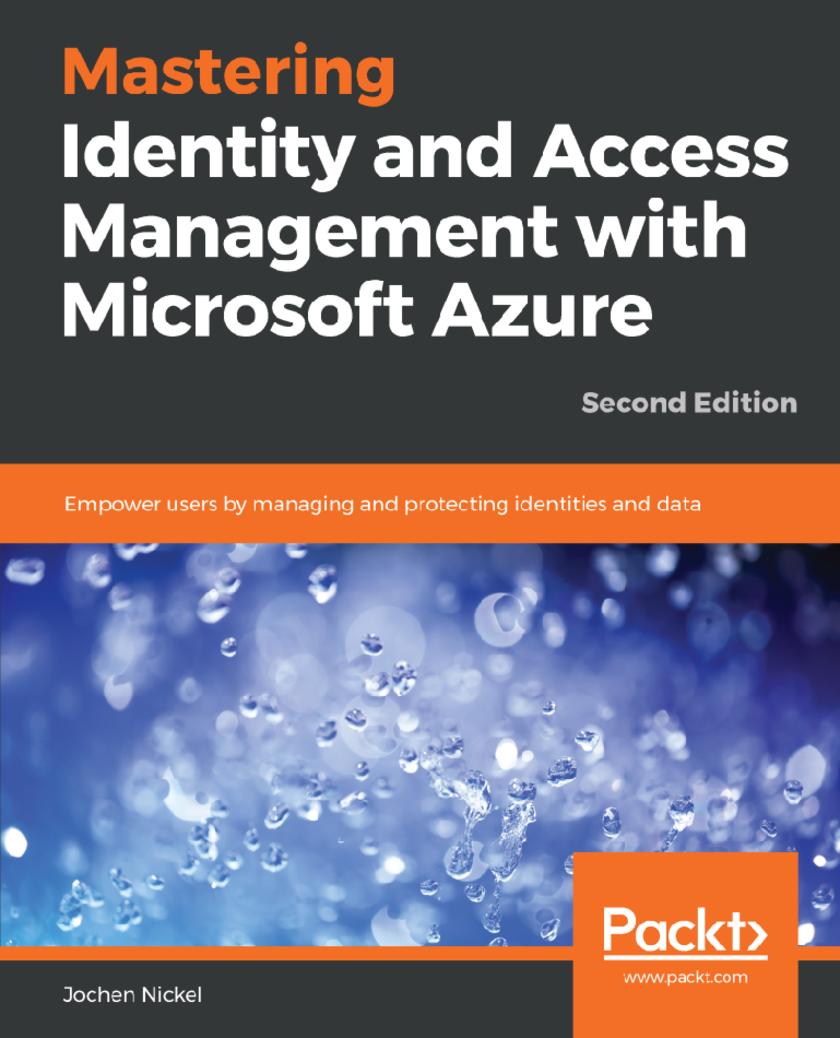
Mastering Identity and Access Management with Microsoft Azure
¥108.99
Start empowering users and protecting corporate data, while managing identities and access with Microsoft Azure in different environments Key Features * Understand how to identify and manage business drivers during transitions * Explore Microsoft Identity and Access Management as a Service (IDaaS) solution * Over 40 playbooks to support your learning process with practical guidelines Book Description Microsoft Azure and its Identity and access management are at the heart of Microsoft's software as service products, including Office 365, Dynamics CRM, and Enterprise Mobility Management. It is crucial to master Microsoft Azure in order to be able to work with the Microsoft Cloud effectively. You’ll begin by identifying the benefits of Microsoft Azure in the field of identity and access management. Working through the functionality of identity and access management as a service, you will get a full overview of the Microsoft strategy. Understanding identity synchronization will help you to provide a well-managed identity. Project scenarios and examples will enable you to understand, troubleshoot, and develop on essential authentication protocols and publishing scenarios. Finally, you will acquire a thorough understanding of Microsoft Information protection technologies. What you will learn * Apply technical descriptions to your business needs and deployments * Manage cloud-only, simple, and complex hybrid environments * Apply correct and efficient monitoring and identity protection strategies * Design and deploy custom Identity and access management solutions * Build a complete identity and access management life cycle * Understand authentication and application publishing mechanisms * Use and understand the most crucial identity synchronization scenarios * Implement a suitable information protection strategy Who this book is for This book is a perfect companion for developers, cyber security specialists, system and security engineers, IT consultants/architects, and system administrators who are looking for perfectly up–to-date hybrid and cloud-only scenarios. You should have some understanding of security solutions, Active Directory, access privileges/rights, and authentication methods. Programming knowledge is not required but can be helpful for using PowerShell or working with APIs to customize your solutions.
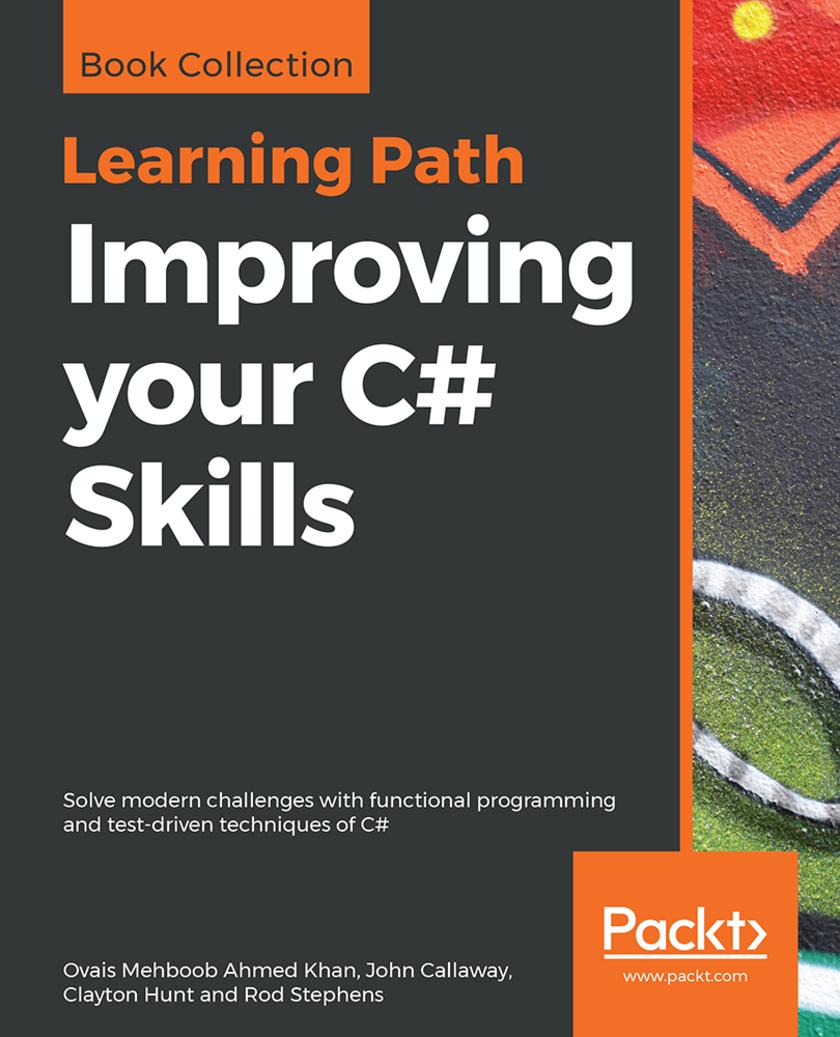
Improving your C# Skills
¥90.46
Conquer complex and interesting programming challenges by building robust and concurrent applications with caches, cryptography, and parallel programming. Key Features * Understand how to use .NET frameworks like the Task Parallel Library (TPL)and CryptoAPI * Develop a containerized application based on microservices architecture * Gain insights into memory management techniques in .NET Core Book Description This Learning Path shows you how to create high performing applications and solve programming challenges using a wide range of C# features. You’ll begin by learning how to identify the bottlenecks in writing programs, highlight common performance pitfalls, and apply strategies to detect and resolve these issues early. You'll also study the importance of micro-services architecture for building fast applications and implementing resiliency and security in .NET Core. Then, you'll study the importance of defining and testing boundaries, abstracting away third-party code, and working with different types of test double, such as spies, mocks, and fakes. In addition to describing programming trade-offs, this Learning Path will also help you build a useful toolkit of techniques, including value caching, statistical analysis, and geometric algorithms. This Learning Path includes content from the following Packt products: * C# 7 and .NET Core 2.0 High Performance by Ovais Mehboob Ahmed Khan * Practical Test-Driven Development using C# 7 by John Callaway, Clayton Hunt * The Modern C# Challenge by Rod Stephens What you will learn * Measure application performance using BenchmarkDotNet * Leverage the Task Parallel Library (TPL) and Parallel Language Integrated Query (PLINQ)library to perform asynchronous operations * Modify a legacy application to make it testable * Use LINQ and PLINQ to search directories for files matching patterns * Find areas of polygons using geometric operations * Randomize arrays and lists with extension methods * Use cryptographic techniques to encrypt and decrypt strings and files Who this book is for If you want to improve the speed of your code and optimize the performance of your applications, or are simply looking for a practical resource on test driven development, this is the ideal Learning Path for you. Some familiarity with C# and .NET will be beneficial.
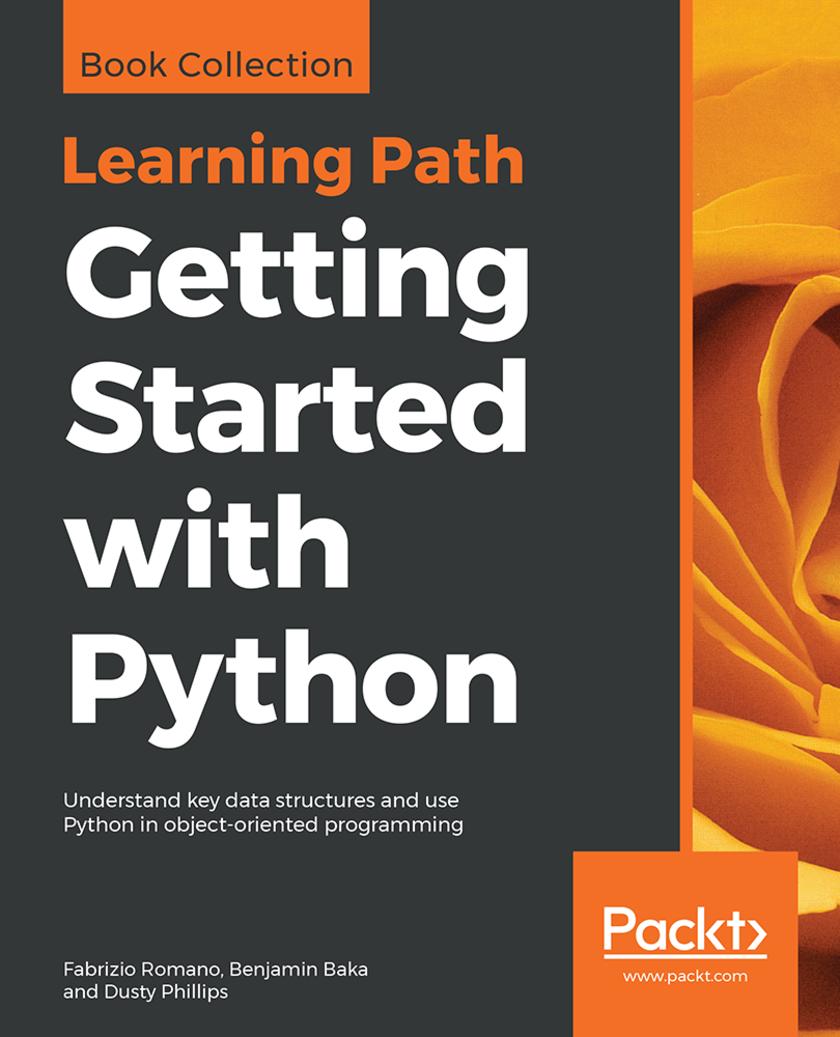
Getting Started with Python
¥90.46
Harness the power of Python objects and data structures to implement algorithms for analyzing your data and efficiently extracting information Key Features * Turn your designs into working software by learning the Python syntax * Write robust code with a solid understanding of Python data structures * Understand when to use the functional or the OOP approach Book Description This Learning Path helps you get comfortable with the world of Python. It starts with a thorough and practical introduction to Python. You’ll quickly start writing programs, building websites, and working with data by harnessing Python's renowned data science libraries. With the power of linked lists, binary searches, and sorting algorithms, you'll easily create complex data structures, such as graphs, stacks, and queues. After understanding cooperative inheritance, you'll expertly raise, handle, and manipulate exceptions. You will effortlessly integrate the object-oriented and not-so-object-oriented aspects of Python, and create maintainable applications using higher level design patterns. Once you’ve covered core topics, you’ll understand the joy of unit testing and just how easy it is to create unit tests. By the end of this Learning Path, you will have built components that are easy to understand, debug, and can be used across different applications. This Learning Path includes content from the following Packt products: * Learn Python Programming - Second Edition by Fabrizio Romano * Python Data Structures and Algorithms by Benjamin Baka * Python 3 Object-Oriented Programming by Dusty Phillips What you will learn * Use data structures and control flow to write code * Use functions to bundle together a sequence of instructions * Implement objects in Python by creating classes and defining methods * Design public interfaces using abstraction, encapsulation and information hiding * Raise, define, and manipulate exceptions using special error objects * Create bulletproof and reliable software by writing unit tests * Learn the common programming patterns and algorithms used in Python Who this book is for If you are relatively new to coding and want to write scripts or programs to accomplish tasks using Python, or if you are an object-oriented programmer for other languages and seeking a leg up in the world of Python, then this Learning Path is for you. Though not essential, it will help you to have basic knowledge of programming and OOP.
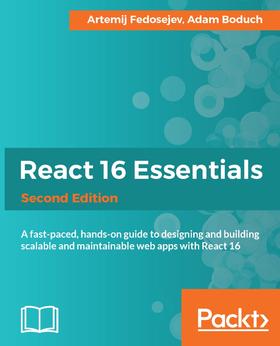
React 16 Essentials - Second Edition
¥222.81
Everything you need to start working with React 16 and assess React FiberAbout This Book·Hands-on examples and tutorials for the latest React 16 release·Assess the impact of React Fiber for your future web development·Build maintainable and high performance React 16 web applicationsWho This Book Is ForIf you're a frontend developer with some knowledge of native JavaScript development and frontend frameworks, wishing to learn the fastest web user interface library there is, then this book is ideal for you.What You Will Learn·Learn to code React 16 with hands-on examples and clear tutorials·Install powerful React 16 tools to make development much more efficient·Understand the impact of React Fiber today and the future of your web development·Utilize the Redux application architecture with your React components·Create React 16 elements with properties and children·Get started with stateless and stateful React components·Use JSX to speed up your React 16 development process·Add reactivity to your React 16 components with lifecycle methods·Test your React 16 components with the Jest test frameworkIn DetailReact 16 Essentials, Second Edition, fully updated for React 16, takes you on a fast-paced journey through building your own maintainable React 16 applications. React experts Artemij Fedosejev and Adam Boduch give you all the essentials you need to know and start working with React 16, in this new edition of the best-selling React.js Essentials title. You'll find the latest React 16 code updates, assessment of React Fiber, new coverage of Redux, and how to work as a modern React developer.The authors offer you their current assessment of React Fiber, and you'll soon be exploring React 16 hands on, creating your own single and multiple user interface elements with React 16. You'll then see how to create stateless and stateful components and make them reactive. You'll also learn to interact between your components and lifecycle methods, and gauge how to effectively integrate your user interface components with other JavaScript libraries. Delve deep into the core elements of the Redux architecture and learn how to manage your application and data persistence. Then go the extra mile with the Jest test framework, and run multiple tests on your applications and find solutions to scale without complexity.Today React is used by Facebook, Instagram, Khan Academy, and Imperial College London, to name a few. Many new users recognize the benefits of React and adopt it in their own projects, forming a fast-growing community. The speed at which React has evolved promises a bright future for anyone who invests in learning it today. Let Artemij and Adam bring you a brand new look at React 16 and React Fiber, and move your web development into the future.Style and approachReact 16 Essentials, Second Edition, will take you on a fast-paced, hands-on journey through building your own maintainable React 16 applications.
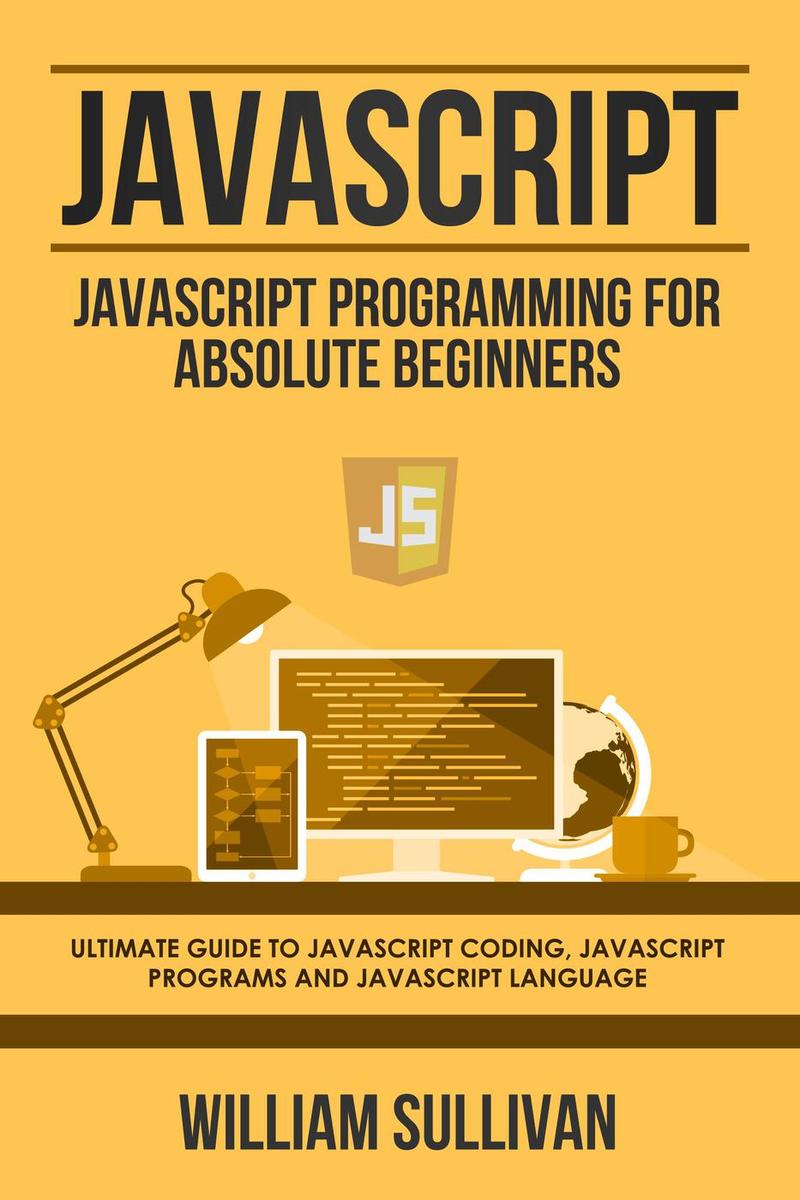
Javascript: Javascript Programming For Absolute Beginners
¥32.62
☆★☆ Javascript: Javascript Programming For Absolute Beginners☆★☆ The best starter guide for javascript!The fundamentals of javascript are often missed, however, this book's primary focus and emphasis is learning the essentials and to build from the ground up.? What You'lll Learn The history of JavaScript and its uses Setting Up Your Environment The Vital Basics of HTML and CSS Statements, Comments & Variables How to properly use jQuery String Operators JavaScript Array Methods Loops and Iteration How To Use Functions And much, much more! ? Within this book you will learn various mechanisms of javascript programming: variables, conditional statements, and why learning these core principles lead to success.Once you gain knowledge of the fundamental building blocks of javascript you will gain confidence to tackle more complex topics down the road.Programming books can easily retail for 100s of dollars, why not start with an expert you can trust and for an affordable price?The immense value of this book cannot be understated, and this is a once in a life time opportunity for you to take advantage of and invest in yourself by empowering yourself with the right tools and knowledge for success.What are you waiting for?Includes: 21 practice questions! Note* For best visual experience of diagrams it is highly recommend you purchases the paperback version for best image quality.☆★☆ Grab your copy now!☆★☆

Inside the Box: An Introduction to ePub, HTML & CSS for the Independent Author/P
¥24.44
An ebook is just a website in a boxBut what’s inside the box?In this clear, concise guide, ebook designer and indie author David Kudler folds back the lid of ePub, the universal ebook format. He introduces you to the nuts and bolts that make an ebook work. Includes overviews of the ePub format and internal structure as well as basic guides to the HTML and CSS (Cascading Style Sheets) that you need to know to make your ebooks look professional.(Self-Publishing & Ebook Creation)David Kudler is an independent publisher and author. He has been designing ebooks since 2010. He blogs about ebook creation, publishing, and marketing on Huffington Post, Stillpoint Digital Press, and The Book Designer.
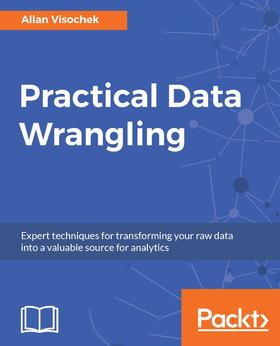
Practical Data Wrangling
¥222.81
Turn your noisy data into relevant, insight-ready information by leveraging the data wrangling techniques in Python and RAbout This Book·This easy-to-follow guide takes you through every step of the data wrangling process in the best possible way·Work with different types of datasets, and reshape the layout of your data to make it easier for analysis·Get simple examples and real-life data wrangling solutions for data pre-processingWho This Book Is ForIf you are a data scientist, data analyst, or a statistician who wants to learn how to wrangle your data for analysis in the best possible manner, this book is for you. As this book covers both R and Python, some understanding of them will be beneficial.What You Will Learn·Read a csv file into python and R, and print out some statistics on the data·Gain knowledge of the data formats and programming structures involved in retrieving API data·Make effective use of regular expressions in the data wrangling process·Explore the tools and packages available to prepare numerical data for analysis·Find out how to have better control over manipulating the structure of the data·Create a dexterity to programmatically read, audit, correct, and shape data·Write and complete programs to take in, format, and output data setsIn DetailAround 80% of time in data analysis is spent on cleaning and preparing data for analysis. This is, however, an important task, and is a prerequisite to the rest of the data analysis workflow, including visualization, analysis and reporting. Python and R are considered a popular choice of tool for data analysis, and have packages that can be best used to manipulate different kinds of data, as per your requirements. This book will show you the different data wrangling techniques, and how you can leverage the power of Python and R packages to implement them.You'll start by understanding the data wrangling process and get a solid foundation to work with different types of data. You'll work with different data structures and acquire and parse data from various locations. You'll also see how to reshape the layout of data and manipulate, summarize, and join data sets. Finally, we conclude with a quick primer on accessing and processing data from databases, conducting data exploration, and storing and retrieving data quickly using databases.The book includes practical examples on each of these points using simple and real-world data sets to give you an easier understanding. By the end of the book, you'll have a thorough understanding of all the data wrangling concepts and how to implement them in the best possible way.Style and approachThis is a practical book on data wrangling designed to give you an insight into the practical application of data wrangling. It takes you through complex concepts and tasks in an accessible way, featuring information on a wide range of data wrangling techniques with Python and R

Secrets Every Author Should Know: Indie Publishing Basics
¥23.14
Frustrated with the plethora of conflicting information on how to self-publish? Wouldn’t it be wonderful to sit down with someone who has already made the mistakes, done the analysis, and will provide you the short cuts—the secrets about the things that work? Now you have that chance with the Career Author Secrets series.Indie Publishing (Self Publishing) has changed dramatically in the past five years. There are now new, easier tools to use for every part of the process—editing, formatting, distribution, sales, and analysis. This first book in the Career Author Secrets series provides a foundation for navigating the indie publishing process and staying away from the scammers. It breaks down the requirements for self-publishing successfully, protecting your rights for the future, and YES I do share all the secrets I’ve learned. It contains everything a DIY author needs to get her book from manuscript to professional publication in both ebook and print, including: Why books don’t sell Options for DIY or contracting professionals The truth about ISBNs & Copyright Registration Secrets for formatting your book the easy way Creating book covers that sell Making decisions about distribution This book is especially valuable for those with limited technical skills who want to produce a quality professional book for the least amount of cost. Learn the secrets to easier implementation and how to make good decisions on what is worth your time and money.




 购物车
购物车 个人中心
个人中心



